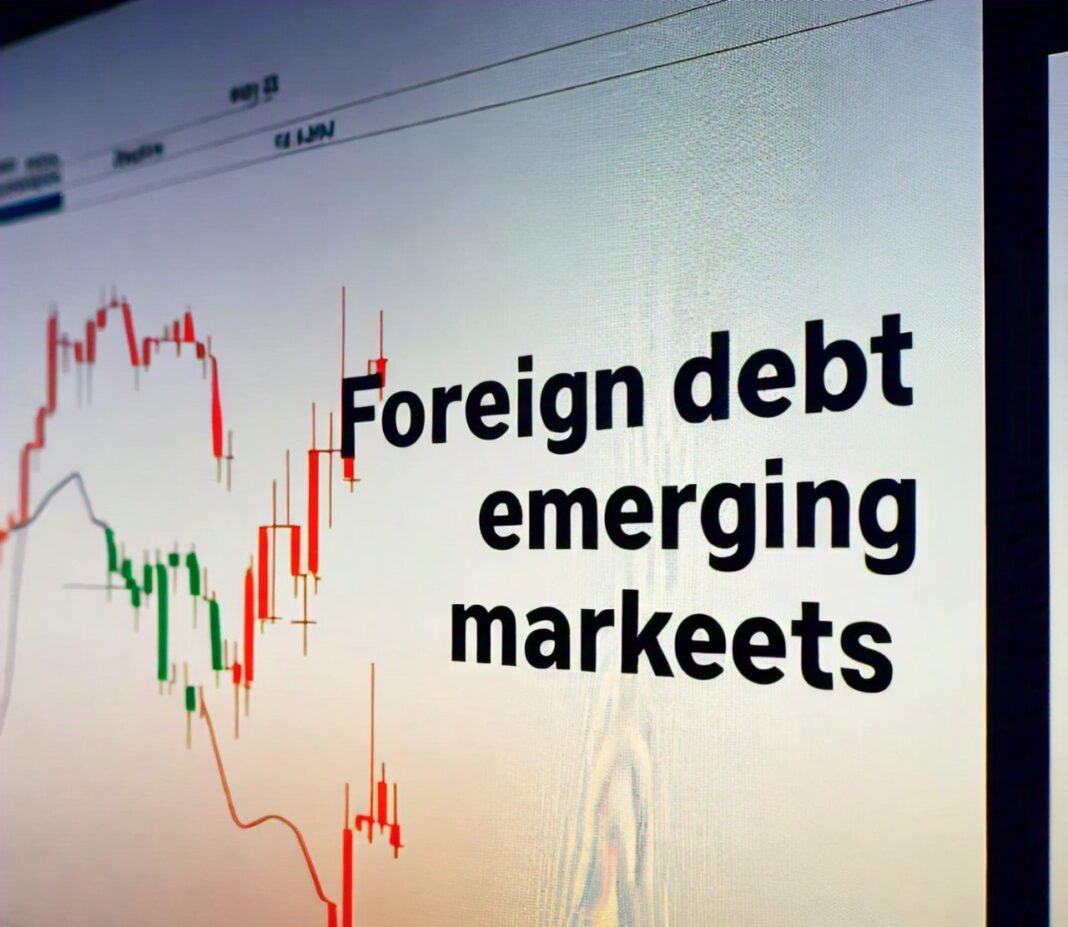Foreign debt plays a pivotal role in the economic landscape of emerging markets, serving as a critical source of financing for development and growth. Defined as the money borrowed from foreign lenders, including commercial banks, governments, or international financial institutions, foreign debt can facilitate infrastructure development, enhance public services, and stimulate economic activity. However, the implications of foreign debt are complex, often presenting both opportunities and challenges for these economies.
Emerging markets, characterized by rapid growth and industrialization, often rely on foreign debt to bridge the financing gap created by limited domestic savings and investment. As these economies strive to enhance their global competitiveness, foreign capital inflows can provide much-needed resources to invest in key sectors such as education, healthcare, and transportation. Nevertheless, the accumulation of foreign debt raises concerns regarding long-term economic stability and sustainability, particularly when external shocks or shifts in global economic conditions occur.
In recent years, the landscape of foreign debt in emerging markets has evolved significantly, shaped by factors such as fluctuating interest rates, geopolitical tensions, and the ongoing impacts of global economic crises. Understanding these trends is crucial for economists and financial analysts who seek to assess the implications of foreign debt on economic growth and stability. This article aims to explore the current trends in foreign debt among emerging markets, analyze its impact on economic performance, and provide insights into the sustainability of such debt levels in the context of broader economic indicators.
Current Trends in Foreign Debt among Emerging Markets
Historical Context
The landscape of foreign debt in emerging markets has undergone significant transformation over the past few decades. In the 1980s, many developing nations faced severe debt crises, often due to a combination of excessive borrowing and unfavorable economic conditions. This led to a re-evaluation of foreign debt dynamics and the establishment of frameworks aimed at debt management and sustainability. The lessons learned from these crises have shaped current policies and approaches towards sovereign debt in emerging market nations.
Recent Data and Statistics
As of 2023, the total foreign debt held by emerging markets has reached alarming levels, with estimates indicating that many countries are grappling with debt-to-GDP ratios exceeding 60%. For instance, according to the World Bank, countries like Argentina and Turkey have seen their foreign debt significantly escalate, leading to increased vulnerability to external shocks. World Bank Data provides comprehensive statistics that highlight these trends and the varying degrees of debt exposure across different nations.
Major Sources of Foreign Debt
Emerging market nations primarily accumulate foreign debt through several channels:
- Sovereign Bonds: Many countries issue bonds in international markets to raise capital. These bonds are often denominated in foreign currencies, which can expose countries to exchange rate risks.
- Loans from International Financial Institutions: Institutions such as the International Monetary Fund (IMF) and the World Bank provide loans to emerging markets, often accompanied by stipulations aimed at promoting economic stability and growth.
- Bilateral and Multilateral Loans: Countries also engage in bilateral agreements with other nations or participate in multilateral lending frameworks that facilitate debt financing for development projects.

Key Trends and Observations
Recent trends indicate that emerging markets are increasingly turning to foreign debt as a means of financing their development goals. However, this reliance poses significant risks:
- Rising Interest Rates: With global interest rates trending upwards, the cost of servicing foreign debt has increased, straining national budgets and potentially leading to fiscal crises.
- Geopolitical Risks: Tensions between major economies can impact the availability and terms of foreign loans, pushing countries to seek alternative funding sources.
- Investment Shifts: As investors become more cautious, there is a growing emphasis on the creditworthiness of emerging markets, influencing their ability to issue new debt.
Also Read: What is a Chartered Financial Accountant?
Factors Influencing Foreign Debt Accumulation
Economic Growth and Investment Needs
Economic growth is a primary driver of foreign debt accumulation in emerging markets. As these nations strive to expand their economies, they often face substantial financing gaps that domestic savings alone cannot fill. The need for infrastructure development, social services, and industrial expansion necessitates external funding, making foreign debt an attractive option.
- Infrastructure Development: Many emerging markets require significant investment in infrastructure, such as transportation, energy, and telecommunications. For example, according to the Asian Development Bank, the region needs trillions of dollars in infrastructure investment to sustain growth and development. Asian Development Bank outlines the critical role of foreign debt in meeting these needs.
- Boosting Productivity: Investments in technology and human capital are essential for enhancing productivity. Governments often turn to foreign debt to fund educational initiatives and technological advancements, which can catalyze economic growth in the long run.
- Sector-Specific Financing: Certain sectors, such as agriculture and manufacturing, may require external financing to innovate and compete globally. The availability of foreign capital can help these sectors grow, leading to job creation and increased economic activity.
External Economic Conditions
Emerging markets are also significantly influenced by external economic conditions, which can affect their ability to accumulate foreign debt:
- Global Interest Rates: Fluctuations in global interest rates can impact borrowing costs. When interest rates are low, emerging markets may be more inclined to take on foreign debt. Conversely, rising rates can lead to increased debt servicing costs, potentially discouraging new borrowing.
- Commodity Prices: Many emerging economies are heavily reliant on commodity exports. A decline in commodity prices can reduce foreign exchange earnings, making it more challenging for these countries to service existing debt and prompting them to seek additional financing.
- Geopolitical Stability: Political stability and favorable relations with major economies can enhance a country’s ability to access foreign debt. Political turmoil or sanctions, on the other hand, can lead to reduced investor confidence and higher borrowing costs.
Political Stability and Governance
The political environment and governance structures in emerging markets play a crucial role in shaping foreign debt accumulation:
- Effective Governance: Countries with strong institutions and transparent governance are often more successful in managing foreign debt. Investors are more likely to lend to countries perceived as low-risk due to effective management of public finances.
- Policy Consistency: Consistent economic policies that promote stability and growth can enhance investor confidence. Conversely, abrupt policy shifts can lead to capital flight and reduced willingness to provide foreign debt.
- Debt Management Policies: Effective debt management frameworks are essential for minimizing risks associated with foreign debt. Countries that implement sound fiscal policies and maintain a clear strategy for debt repayment are more likely to attract foreign investment.

Currency Fluctuations
Currency stability is another significant factor influencing foreign debt accumulation. When a country borrows in a foreign currency, fluctuations in exchange rates can dramatically impact the cost of servicing that debt. For example, a depreciation of the local currency can increase the burden of foreign debt, leading to potential fiscal crises.
In conclusion, the accumulation of foreign debt in emerging markets is influenced by a complex interplay of factors, including economic growth needs, external economic conditions, political stability, and currency fluctuations. Understanding these influences is critical for economists and financial analysts as they assess the sustainability and implications of foreign debt in these nations.
Analyzing the Impact of Foreign Debt on Economic Growth
Positive Effects
Foreign debt can serve as a catalyst for economic growth in emerging markets, facilitating investments that may not be possible through domestic resources alone. The impact of foreign loans on emerging economies can be observed through several key avenues:
- Infrastructure Development: One of the most significant benefits of foreign debt is its role in financing large-scale infrastructure projects. Roads, bridges, and energy facilities funded through foreign loans can enhance connectivity and efficiency, leading to increased productivity. For example, projects funded by the World Bank have improved infrastructure in countries like Ethiopia, significantly boosting economic activity. World Bank Infrastructure details such initiatives.
- Job Creation: Investments made possible by foreign loans can lead to job creation in both the short and long term. As sectors such as construction, manufacturing, and services expand due to increased funding, employment opportunities grow, contributing to poverty reduction and improved living standards.
- Technological Advancement: Foreign debt can also facilitate access to advanced technologies and expertise. By borrowing funds, emerging markets can invest in modern production techniques and enhance their competitiveness in the global market. For instance, investments in renewable energy technologies funded by foreign loans can lead to sustainable growth while addressing environmental concerns.
Negative Effects
Despite the potential benefits, foreign debt can also pose significant risks to economic stability and sustainability:
- Debt Servicing Costs: As foreign debt accumulates, the burden of servicing that debt can become overwhelming, especially in times of economic downturn. High debt servicing costs can divert resources away from essential public services, such as education and healthcare, ultimately hindering long-term economic growth.
- Currency Risks: Borrowing in foreign currencies exposes emerging economies to exchange rate fluctuations. A depreciation of the local currency can increase the cost of debt repayment, leading to increased fiscal pressure. Countries like Argentina have faced severe challenges when currency crises coincided with high levels of foreign debt.
- Dependency on External Financing: A reliance on foreign loans can create a cycle of dependency, where countries continually borrow to service existing debts rather than investing in sustainable growth. This can lead to a precarious economic situation, particularly if global economic conditions change unfavorably.
The Relationship Between Foreign Debt and Economic Stability
Indicators of Economic Stability
Understanding the relationship between foreign debt and economic stability requires analyzing several key indicators that reflect the overall health of an economy. These indicators help economists and financial analysts assess whether a country can manage its foreign debt sustainably.
- Debt-to-GDP Ratio: The debt-to-GDP ratio is a crucial metric for evaluating a country’s ability to repay its debt. A lower ratio generally indicates a healthier economy with a better capacity to manage debt. Conversely, a high debt-to-GDP ratio can signal potential fiscal distress. According to the International Monetary Fund (IMF), emerging markets with ratios above 60% face heightened risks of economic instability. IMF Debt Sustainability provides insights into debt sustainability assessments.
- Foreign Reserves: The level of foreign reserves is another critical indicator. High foreign reserves can provide a buffer against external shocks, enabling a country to meet its foreign debt obligations even during economic downturns. Countries like Brazil and India have maintained substantial reserves, enhancing their economic resilience.
- Current Account Balance: A positive current account balance indicates that a country is earning more from exports than it is spending on imports, contributing to economic stability. A persistent current account deficit, on the other hand, may raise concerns about a country’s ability to service its foreign debt, particularly if it relies on external borrowing to finance the deficit.
Assessing Debt Sustainability
Evaluating debt sustainability involves analyzing whether a country can meet its future debt obligations without resorting to excessive borrowing or compromising economic growth. Key metrics and frameworks include:
- Debt Service Coverage Ratio: This ratio measures a country’s ability to service its debt from its operating income. A higher ratio indicates a greater ability to meet debt obligations, while a lower ratio raises concerns about sustainability.
- IMF and World Bank Assessments: Both institutions provide frameworks for assessing debt sustainability, considering factors such as growth projections, interest rates, and the potential impact of external shocks. These assessments are crucial for informing policy decisions and guiding borrowing strategies.
- Risk of Debt Distress: Emerging markets face various risks that can impact debt sustainability, including political instability, global economic downturns, and commodity price fluctuations. Countries must implement robust economic policies and frameworks to mitigate these risks.
Policy Recommendations
To enhance economic stability while managing foreign debt, emerging market nations should consider the following policy recommendations:
- Prudent Debt Management: Countries should develop comprehensive debt management strategies that focus on maintaining sustainable debt levels. This includes careful planning of borrowing, prioritizing low-interest loans, and avoiding excessive reliance on foreign currency-denominated debt.
- Diversification of Funding Sources: Reducing dependence on foreign debt by diversifying funding sources can enhance resilience. Governments might explore alternatives like domestic bond markets, public-private partnerships, and foreign direct investment (FDI) to finance development projects.
- Strengthening Economic Fundamentals: Implementing sound fiscal policies, improving governance, and fostering a stable political environment are essential for maintaining economic stability. Strengthening institutions can improve investor confidence and reduce borrowing costs.
Future Outlook for Foreign Debt in Emerging Markets
Predicted Trends and Changes
As we look to the future, several trends are likely to shape the landscape of foreign debt in emerging markets:
Increased Borrowing Amid Global Uncertainties: Emerging markets are expected to continue leveraging foreign debt as they navigate global economic uncertainties, including inflationary pressures and geopolitical tensions. Countries may seek to finance recovery efforts post-pandemic, leading to elevated borrowing levels. Analysts predict that nations will increasingly turn to foreign loans to fund critical infrastructure projects and bolster economic growth.
Shift Towards Sustainable Financing: There is a growing emphasis on sustainable financing models, including green bonds and climate-resilient investments. As global awareness of climate change increases, emerging markets may attract foreign debt tied to sustainable development goals. This shift could provide opportunities for countries to finance projects that contribute to both economic growth and environmental sustainability.
Digital Finance and Fintech Innovations: The rise of digital finance and fintech solutions is expected to transform how emerging markets access foreign capital. Innovations in blockchain technology, peer-to-peer lending, and mobile banking can enhance financial inclusion and reduce borrowing costs. Reports from organizations like the World Economic Forum indicate that these technologies can facilitate more efficient debt issuance and management.

The Role of International Financial Institutions
International financial institutions (IFIs) will play a crucial role in shaping the future of foreign debt in emerging markets:
Supportive Lending Policies: Institutions like the IMF and the World Bank are likely to adapt their lending policies to support countries in managing their foreign debt sustainably. This includes offering concessional loans and technical assistance for debt management and economic reform.
Debt Relief Initiatives: In light of ongoing economic challenges, IFIs may expand debt relief initiatives for highly indebted countries. Programs aimed at restructuring debt or providing temporary relief could help stabilize economies and allow countries to focus on growth.
Focus on Capacity Building: IFIs are expected to increase efforts in capacity building, helping emerging markets develop robust frameworks for debt management and economic governance. This support can enhance the resilience of these economies in the face of external shocks.
Challenges Ahead
Despite the potential for growth and innovation, several challenges loom on the horizon:
- Rising Interest Rates: As central banks in advanced economies raise interest rates to combat inflation, emerging markets may face higher borrowing costs. This trend could strain fiscal budgets and increase the risk of debt distress, particularly for countries with significant foreign currency debt.
- Geopolitical Tensions: Ongoing geopolitical tensions can impact capital flows and investor confidence in emerging markets. Countries must navigate these complexities to maintain access to foreign financing while ensuring economic stability.
- Global Economic Volatility: The unpredictability of global economic conditions poses a significant challenge. Emerging markets must remain vigilant and adaptable to changing circumstances that could affect their foreign debt situations, including commodity price fluctuations and trade dynamics.
Conclusion
In summary, the dynamics of foreign debt in emerging markets present a complex interplay of opportunities and challenges that are critical for understanding their economic trajectories. As these nations continue to rely on foreign debt to finance development, the implications for economic growth and stability become increasingly significant.
As the global economic landscape continues to evolve, economists and financial analysts must remain vigilant in monitoring the trends and impacts of foreign debt in emerging markets. Understanding these dynamics is essential for informing policy decisions and investment strategies that promote long-term stability and prosperity.
While foreign debt can be a powerful engine for growth, it is imperative for emerging markets to approach it with caution, ensuring that borrowing practices are sustainable and aligned with broader economic goals. Continued research and dialogue among policymakers, analysts, and stakeholders will be vital in shaping a resilient future for these economies.






